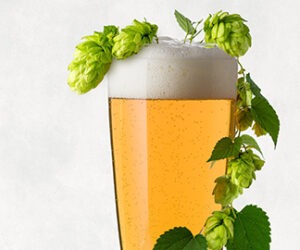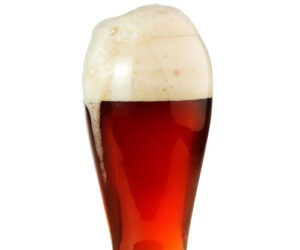English IPA: Tips from the Pros
The Beer judge certification program (BJCP) has three sub categories to classify India pale ale: English, American and imperial. while they are all hoppy, they are different. Two pro brewers explain what makes English-style IPA unique, and how to achieve hop and malt balance with restraint.
Brewer: Derek Prentice, Fuller, Smith & Turner P.L.C. in London, UK
One of the main differences between an English-style IPA as opposed to other styles of IPA is that an English-style IPA would normally feature English hop varieties, although there are a considerable number of examples of US hops and imported malts being incorporated into the IPAs of the late 19th and early 20th century from the brewing records.
The style was originally developed to withstand a long and hot sea voyage, which in the earlier days would have been in wood casks. Consequently high levels of hops for bittering were used, and in addition dry hopping appears in many recipes. These techniques would aid the keeping qualities of the beer and enhance the flavor profile.
Typical ABVs for examples from this period would have been 6.0%–8.0%, but there are also some that are lower, and those may have been for more domestic consumption as the style became one adopted in the domestic market.
The beer would also have been reasonably well attenuated to prevent over conditioning/pressurizing in cask, which would have led to cask, shive or keystone failures and loss of contents.
Many of today’s American IPAs follow the same principles as outlined above but will tend to feature the US hop varieties.
In contrast, regular pale ales, depending on what time period you look at, would likely be slightly darker (the lighter colored IPAs really only became possible with advances in malting and particularly kilning enabling consistent paler malts to be produced). They would have had lower hop loadings during brewing and probably not as fully attenuated.
At Fuller’s, we brew our English-style IPA using pale ale malt with a very small amount of crystal malt (about 2%) in the grist. We use Fuggles and Goldings hops as main kettle bittering hops, Goldings as a late kettle hop, Goldings and Target as dry hops.
We use proprietary strains of yeast in our brewery, but for brewers who want to emulate the style at home, I would recommend using ale strains, preferably those which attenuate well and do not produce very fruity/estery flavors in the beer.
Other than choosing ingredients, the best way to brew a good example of English-style IPA is to brew it well. We don’t use any special techniques other than maintaining good brewing practices and we like to think that our unique yeast strain and experience combine to produce an enjoyable beer.
If you are interested in brewing your own English-style IPA, keep in mind that there is a tendency to over bitter IPAs, and that is not appropriate in this style. Remember, the original versions of this beer had a few months at sea to help soften the initial bitterness. Balancing your hop additions between initial, late and dry hopping should produce a pleasantly assertive bitterness matched with hop flavor, aroma and malt character. This approach is much more in tune to the English style, rather than a beer that leaves the drinker’s palate coated with astringency.
Brewer: Ken Jones, Glenwood Canyon Brewing Co. in Glenwood Springs, CO
I think the most important characteristic to brew this style of IPA is the use of English hops, though they can be augmented with other varieties. The second is the use of minerals to simulate water from Burton-on-Trent. Third is fermentation with British ale yeast for added flavor complexity.
At Glenwood Canyon, we brew IPA with domestic malts from Briess because we know they are fresh. Our grist consists of 91% 2-Row, 4% Bonlander®, 4% Caramel 40 and 1% Cara-Pils. We like to keep the color toward the light end of the scale in order to better showcase the hops and complexity from our yeast. We also strive to keep residual sweetness in check because a traditional IPA should be well-attenuated.
We use US Northern Brewer hops, Columbus and East Kent Goldings in our IPA. Northern Brewer is our primary bittering hop for several of our beers because it has a relatively clean, neutral flavor. We use Columbus hops in order to gain an appropriate level of bitterness that would be difficult to get from English-variety hops alone. Part of the art of an IPA is finding harmony with a combination of hops and Columbus works well with East Kent Goldings. Most of our late hops and all our dry hops are East Kent Goldings.
For yeast, we use Ringwood Ale yeast for our IPA, though there are many other British ale yeasts that would give similar results. An American ale yeast would do very nicely, but would probably lack some flavor complexity. We start our fermentation at 66 °F (19 °C) and ramp it up toward the finish. It’s ok to have some esters in an IPA and it should definitely be well-attenuated.
We had our water analyzed and determined what was needed to Burtonize it. We lowered the pH with food-grade acid, then added Gypsum and a small amount of calcium chloride to our mash. We did several blind taste sessions with other brands of English-style IPAs and adjusted our mineral dosage accordingly. It took some time and effort to dial it in, but it was worth it.



